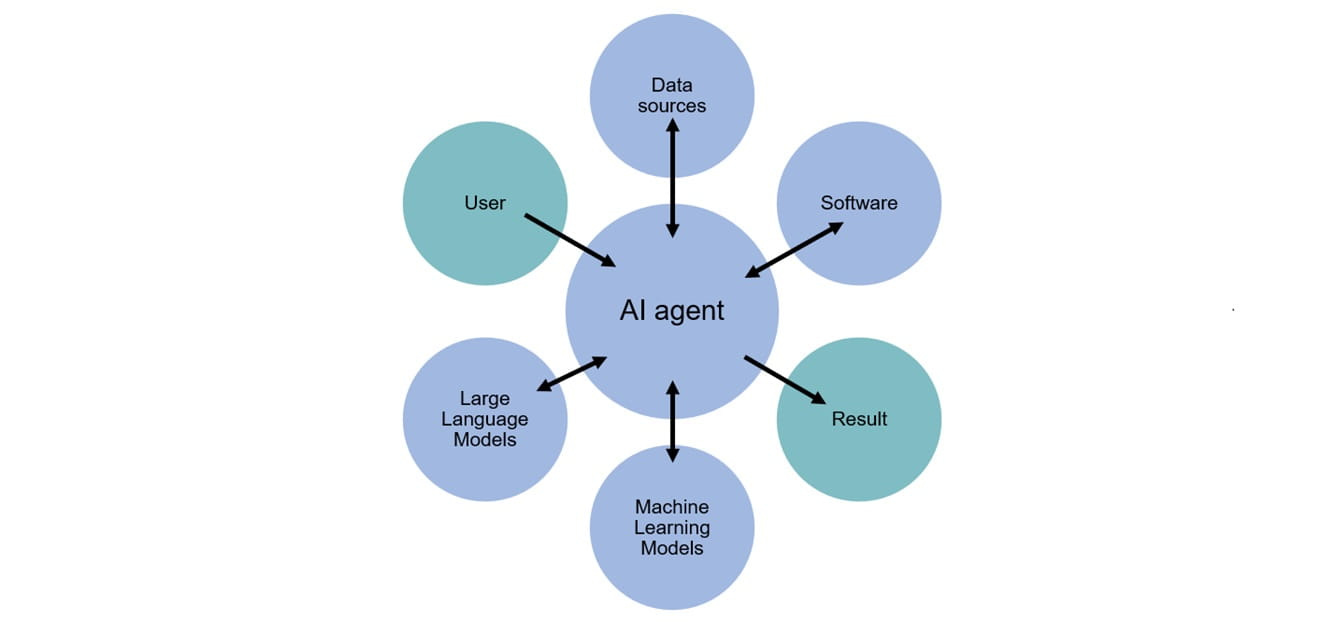A Agentic Era: O que significa para o Design de Produto?
“Agentic Era” é um termo novo para ti? Vamos pôr-te a par.
Bem-vindo à Era dos Agentes
É a primeira vez que ouves falar da “Agentic Era”? Vamos pôr-te a par. Em 2025, os agentes de IA estão a assumir um papel central, transformando a forma como interagimos com a tecnologia.
Lembras-te da frase “A melhor interface é nenhuma interface”? Pois bem, isso pode estar mais certo do que nunca. Os agentes de IA estão a evoluir para executar tarefas nos bastidores, reduzindo a necessidade de interfaces tradicionais como ecrãs, menus e botões.
Imagina dizer simplesmente: “Organiza a minha viagem a Londres”, e o teu agente de IA trata de tudo por ti — sem cliques, sem pesquisas, sem interfaces. Esta mudança sugere que, nos próximos 10 a 20 anos, o design de interfaces como o conhecemos poderá tornar-se menos relevante.
Mas antes de irmos mais longe, vamos clarificar a diferença entre assistentes de IA e agentes de IA.
AI Assistants vs. AI Agents: Qual é a diferença?
Principais Características dos Assistentes de IA
Reativos: Aguardam comandos do utilizador antes de agir.
Conversacionais: Interagem em diálogo, respondendo a perguntas e ajudando em conversas.
Tarefas simples: Executam tarefas diretas, como obter informações ou definir lembretes.
Dependentes do utilizador: Necessitam de orientação e input constantes.
Utilidade no dia a dia: Ajudam em tarefas comuns e rápidas.
Compreensão do contexto: Utilizam NLP (Processamento de Linguagem Natural) para fornecer respostas relevantes.
Fáceis de usar: Parecem uma conversa com um amigo — sem necessidade de configurações complexas.
Principais Características dos Agentes de IA
Autónomos: Iniciam e completam tarefas sem depender constantemente do utilizador.
Orientados para objetivos: Trabalham com metas mais amplas, como pesquisar tendências ou planear projetos completos.
Pensamento proativo: Dividem tarefas complexas em etapas e executam-nas de forma independente.
Gerem complexidade: Lidam com problemas intricados, desde a análise de dados de utilizador até à geração de múltiplas opções de design.
Escaláveis: Conseguem gerir várias tarefas em simultâneo ou focar-se intensamente numa só, conforme necessário.
Aprendem e adaptam-se: Integram informação externa (como pesquisas online) para aperfeiçoar as suas ações ao longo do tempo.
Funcionam em silêncio: Operam em segundo plano e só intervêm quando necessário.
What Changes in User Experience?
O que muda na Experiência do Utilizador (UX)?
Design para interação com IA
Os designers terão de conceber interfaces que facilitem uma comunicação eficaz entre utilizadores e agentes de IA. Isto inclui design conversacional e interações proativas (AI-First UX Design in 2025: Shaping Smarter User Interactions), em que o agente antecipa necessidades e age em nome do utilizador .
Experiência de utilizador adaptativa
Como os agentes aprendem e se adaptam com o uso, a experiência evoluirá ao longo do tempo. O design tem de prever esta dinâmica para preservar a usabilidade (The Future of UX Design: Adapting to a World of AI Agents)..
Questões éticas
O uso crescente de agentes autonómos traz consigo preocupações sobre privacidade, viés e transparência. É essencial criar sistemas que expliquem decisões da IA e garantam a confiança do utilizador (UX of AI).
Conhecimento técnico necessário
Designers devem entender funcionalidades como processamento de linguagem natural, análise de dados e tomada de decisão autónoma para integrar agentes de IA de forma eficaz nos produtos (AI capabilities and examples).
Como os Modelos Mentais Vão Mudar
Nesta nova era, é essencial considerar como os utilizadores percebem e confiam nos agentes de IA — algo que pode ser bastante diferente das interfaces tradicionais. Isto implica desenhar para a confiança e a transparência, garantindo que os utilizadores se sintam confortáveis com ações tomadas pela IA e com todos estes novos modelos mentais sobre o funcionamento das coisas (Getting beyond the AI assistant - designing UX for AI agents).
Estamos também a lidar com sistemas dinâmicos que aprendem e se adaptam, em vez de entidades estáticas. Ter uma visão sistémica ajuda a criar produtos que evoluem com a interação dos utilizadores e os dados recolhidos, alinhando-se com o foco da era agentic na adaptabilidade (Exploring AI Agents).
Pensamentos finais
São tempos emocionantes! Como designers, precisamos de estar atentos a esta mudança de paradigma. A ascensão dos agentes de IA desafia-nos a repensar o design tradicional, promovendo experiências intuitivas, éticas e eficientes num mundo dominado pela inteligência artificial.
Estás preparado para esta nova era?






